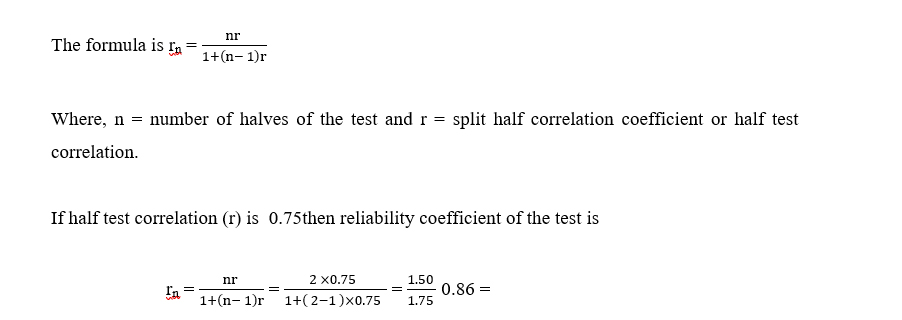In today’s world everything is more systematized , scientific and objectivity is being maintained . Teaching learning system is not an exception to it . The educationists are taking care of it and are more concerned about it .Teaching learning is as such not restricted to only teaching and learning rather it involves diagnosing , counseling , analyzing etc . But before doing all these it proper evaluation is required which involves developing various types of tests and administering it on the students to measure their achievements , learning difficulties and accordingly provide required services . So in teaching learning process Test occupies an important place . It is not an easy task to construct a perfect test . It has some characteristics that one has to follow while developing a Test . The followings describe some of the important characteristics of a good test.
Characteristics of a good Test :
Test in Education implies a set of questions . Framing a set of questions as per the instructional objectives is not an easy task . While developing a Test the following characteristics should be kept in mind .
Reliability :
Reliability is the consistency of a Test . If a test is used over and over again and gives the same result it is said to be a reliable one .Reliability of a test means the test is trustworthy .
Types of Reliability :
The following are different types of reliability –
- Test- Retest reliability –This is a very simplest method of determining reliability . The same test is applied to the same group of population twice with a time gap . The result of the sets of score are to be correlated . If the coefficient of correlation is high then the test is said to be a reliable one .
- Split-half Method: In split half method the same test is divided into two same equal appearing parts . The results of the two parts are correlated by using Spearman Brown formula .

- Parralel form method : It is also called as the equivalent form method of determining reliability . In this type of reliability two equal form of test is prepared and administered to the same population within a short period of time .The test results are being correlated and the reliability is to be found out .
- Kuder Richardson 20 Formula (KR-20) : This is used to calculate for the reliability of the test in a dichotomous item. The reliability is calculated by applying KR-20 formula .
Validity :
The validity of a test is truthfulness of a test. It is how well a test measures what it appears to be measured .This is one of the important characteristics of a good test . The test must measure what it supposed to measure and not any other characteristics or trait .
Types of Validity :
There are different types of validity as discussed below –
- Content Validity:
Content validity measures how well the test items are the true representative of the content . Content Validity is the most important type of validity which can be achieved through a careful observation of the test content.
- Construct Validity:
Construct is a psychological trait or quality . It refers to the extent to which a test confines a specific theoretical trait and it overlaps with some of the other aspects of validity. It is based on the degree to which the items in a test reflect the important aspects of the theory on which the test is based on.
- Concurrent Validity:
This is also called as criterion validity . It measures how well a new test is comparable with the already existing one . This validity is considered when we are using the test to distinguish between two or more groups of individuals whose status at the time of testing is different.
- Predictive Validity:
It measures the predictive capacity of the test ; how well a test can predict the future performances. Predictive validity is the level to which a score on a test predicts some criterion measures.
Objectivity:
This is another important characteristic of a test . A test in order to be perfect must have this character of objectivity . No subjective error or personal biasness should interfere the test score or result.
Usability :
A test in order to be a good one it must have the character like usability . It implies a test perfectly constructed must be easy to use . The test must have practical value in terms of administration , economic and time factor .
Conclusion
Teacher is assigned with not only teaching but also assessing . Assessment involves construction of test . Properly constructed test can convey the meaning for which it is prepared . So this requires a hard task for the teacher . Thus the teacher must be more careful and maintained the characteristics of test construction then only a good test can be constructed to measure what it purports to measure and will fulfill the purpose .




